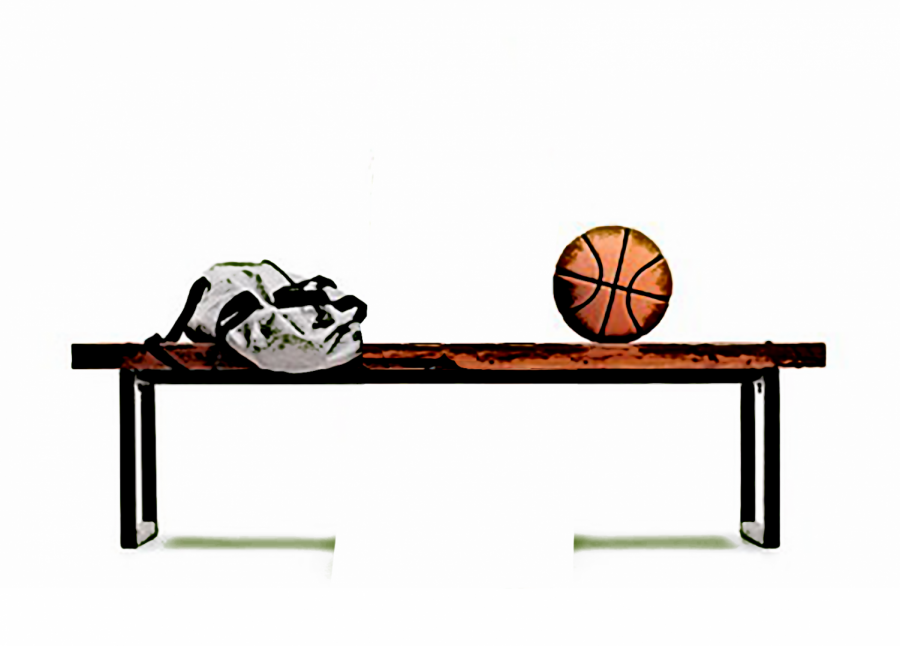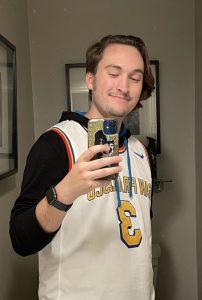How the Runnin’ Utes are Tackling the Ever-Tricky Rebuild
(Graphic by Jose Alex Garcia | The Daily Utah Chronicle)
September 3, 2021
Rebuilding in sports is hard. In every league across the world, there are a few teams who just have no hopes of winning it all. Rather than going for the title, it might be better to take a season or two to reassess, regroup and figure out a coherent plan. No rebuild is more unique than that of a college basketball team, made even more complicated in recent years because of many rule changes within the NCAA. The Runnin’ Utes are seeing that firsthand right now, in the middle of a retooling year under a new coach and an almost entirely new roster.
College basketball is one of the most unique leagues we have in America today. March Madness adds a randomness to the postseason format with single elimination and non-conference matchups. Players can switch teams basically whenever they want thanks to expanded transfer rules, and the best in the world more often than not head to the NBA after just one season due to the one-and-done rule. It’s nearly impossible to keep a stacked roster together for more than one season at a time, so the perennial powerhouses stay great by recruiting well year in and year out, combined with excellent and consistent coaching.
Utah finds itself stuck in the middle of the college basketball world. After moving on from head coach Larry Krystkowiak following another disappointing season, much of Utah’s rotation from last year decided to transfer away from the program. Timmy Allen, Alfonso Plummer, Pelle Larsson, Ian Martinez and Rylan Jones all found new teams in the NCAA, and Mikael Jantunen left for pro opportunities in Europe, leaving only Branden Carlson and Riley Battin leftover among players who got consistent minutes last season. Even Battin tested the transfer waters before ultimately returning to the program. Utah returned only seven players from last year; five of them were rarely in the rotation, if at all. A coaching change in college hoops always risks losing the roster as well, and that’s what happened here as most of the players chose to follow their coach out the door.
Utah Athletics Director Mark Harlan then hired former Utah State head coach Craig Smith as the new leader of the program to replace Krystkowiak. Smith brought some of his former players with him from the Aggies in Rollie Worster and Marco Anthony.
Hitting the recruiting trails brought them an almost entirely new roster, including the likes of Dusan Mahorcic, Gabe Madsen, David Jenkins Jr., Bostyn Holt and the return of Both Gach to go along with the two former Aggies.
Utah is staring right down the barrel of being one of the worst teams in the Pac-12 this season, but the intriguing part about that is that no one really knows how good this team can be. A lot of these players have not had a chance to prove anything at the NCAA level yet, and many could be poised for breakout seasons. Some players are upperclassmen, having played minor roles on previous squads but never truly getting the chance to lead a team. It’s a lot to take in for new players, and the adjustment period will surely be tricky, but there is a level of upside to be had when giving chances to unproven talent.
Schools like Duke, North Carolina and Kentucky obtain talent based on reputation alone. The Utes don’t have that luxury, especially now with a coach in his first season in the Pac-12. They have been recruiting out of the mid-majors and junior colleges. It’s a tall task for a new coach, but rebuilding on the fly is part of the reason Smith stood out in the hiring process.
So, Utah’s rebuild is underway. There’s no salary cap, no trades and no draft like there is in the pros. They have a select number of scholarships to hand out and that’s that. The Utes are not a traditional powerhouse; they don’t have a legendary coach and they haven’t been nationally relevant in at least five seasons. Still, there may be a reason for optimism that this program can get back on its feet and return to relevancy.
Rebuilding in college basketball is quite tricky, but can be done very quickly if executed correctly. Only time will tell if Utah will be able to get back on their feet after this offseason full of transition, but the mechanics of college basketball and the NCAA allow for a potentially fast turnaround with many new faces.










robert schiavo • Sep 15, 2021 at 2:08 pm
i think it is hopeless.like the previous coaches craig smith can not recruit five and four star plAyers.chris burgess would have been a better choice,a better recruiter.he also considers utah a destination job.harlan blew it.